Galicia, Spain is a must for Albariño lovers. It became a must visit wine region for me, because over the years I have enjoyed awesome Albariño wines, mainly from Rías Baixas. We based ourselves in Santiago de Compostela and, spent a couple of days exploring its charms. Wandering the traffic-free streets of the medieval centre, we saw, modern-day pilgrims as they headed for the spectacular cathedral. Even though we were on a vinous mission we so enjoyed exploring Santiago de Compostela's historic center.
Cathedral of Santiago de Compostela © Spaswinefood
Pilgrims on the Camino de Santiago have long discovered the charms of Santiago's spectacular cathedral and historic buildings. For us, it was a great opportunity to sample some Albariño wines while exploring this beautiful city.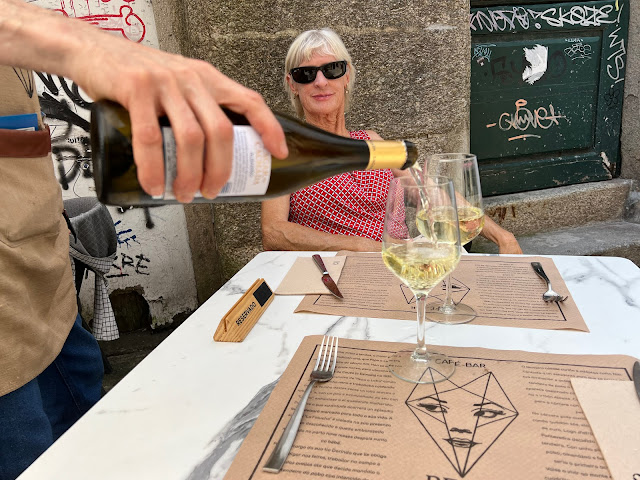
When the opportunity to visit Galicia presented itself my friend Carol, and I began to plan our springtime travels in Spain and Portugal. Besides wanting to learn about Albariño we had heard and read so many good things about Galicia; so we just had to visit. Our pilgrimage to Galician wine country began when we crossed into Galicia from Portugal. Albariño is native to the northwestern corner of the Iberian peninsula where it is planted both sides of Spain's and Portugal's border. Albariño (Galician pronunciation [alβaˈɾiɲʊ]), or Alvarinho (Portuguese pronunciation [alvɐˈɾiɲu]) meaning white, whitish, is a white grape variety grown in northwest Portugal and Spain. While there has been some discussion about its origin, recent studies suggest this grape is native to Galicia/Portugal.
Welcome to Galicia's Wine Country
Upon arrival in Galicia, we started to view Albariño Vineyards through the car windows. We spent our first night in Vigo, a vibrant seaside city.
Next day, it was a leisurely drive north, across the Vigo estuary, and onto Santiago de Compostela. Along the way we passed by many vineyards where Albariño is grown on pergolas.
As we drove from Vigo to Santiago de Compostela we were immediately introduced to Galician wine country. Each day from Santiago we set on our own vinous pilgrimage, exploring both inland Rutas del Vino and the coastal vineyards of Rías Baixas (lower estuaries).
Galicia's Rías Baixas
What we discovered in Rias Baxis is that Atlantic Spain’s Galicia is a land of (1) pazos, and grand manor houses surrounded by vineyards, (2) hórreos (granaries), and (3) seafood rich estuaries fringed with vines and vegetable gardens.
Galicia has five major wine regions: Rías Baixas, Ribeiro, Ribeira Sacra, Valdeorras, and Monterrei. Rias Baixas, is the best known of Galicia's wine areas consists of five sub-regions (Val do Salnés, Ribeira do Ulla, Soutomaior, O Rosal, and Condado do Tea). Rías Baixas wine tends to be made entirely from the Albariño variety, which constitutes more than 90 percent of the grapes planted. Increasingly producers are experimenting with oak aging and malolactic fermentation. While there is a classic, overarching style of Albariño, each of the area’s sub-regions imparts a slightly different character to the wine. A very small amount of red wine is also produced here from the grape varieties Caiño, Espadeiro, and Mencía.
Rías Baixas's Albariño is typically aromatic and acid-driven. Some have described it as having a Viognier nose, and a Riesling palate. This classic, overarching description is changing as wine producers experiment with oak aging and malolactic fermentation. Moreover, each of the area’s sub-regions brings a slightly different character to the wine. Given the climatic variation within the Rias Baixas DO there are different sub-regions and variations between vineyards, and of course across vintages. While during our Galician wine travels we explored mainly the Rías Baixas area however, later as we traveled onto Portugal's Douro Valley we would get a glimpse into Galicia's other wine appellations.
Must Visit Wineries in Rías Baixas
When planning our Rias Baixas winery stops Pazo De Señorans and Pazo Baión were my top picks. Let's take a look and see why.
1. Pazo De Señorans
Pazo De Señorans, a gorgeous wine property, was our first stop. Here we toured the property and did a wine tasting with the winemaker.
This is a wine estate where women are engaged in all the winery's activities.
Vineyard, Pazo Señorans © Spaswinefood
Welcome to Pazo Señorans © Spaswinefood
What welcome to Galicia it was! We had come to the best place to begin our wine explorations.
This wine tasting set a high bar for us to measure other Albariño wines against.
Let me share a few highlights from our tour of the estate.
Hórreo, Pazo Señorans © Spaswinefood
I cannot thank the staff enough for a first class visit. It was such a wonderful welcome to Galicia at Pazo De Señorans.
2. Pazo Baión
Our wine country explorations also brought us to one of Spain's key Albariño estates with a storied past.

A tree-lined walkway comes into full view as you enter through the gate posts.
A closer look reveals that the estate's old vines are in a natural bowl, with its own micro-climate. The average vine age is 35 years, with some as old as 80. The vines lined up under an immaculate pergola system. This design captures the warmth of the Spanish sun because of its granitic soil and its natural ampitheatre shape.
Pergola, Pazo Baión © Spaswinefood
Of course there are roses.
From the vineyard the nearby village is visible in the distance.
While walking the property we took in the views of the village, and a nearby church in the distance.
Church in the Distance, Pazo Baión © Spaswinefood
Pazo Baión: History, Storied Past, and More
Following along on the impressive walkway we arrived at a castle-like old mansion, which has been renovated. This15th century castle was empty after the Spanish government confiscated it from Spain’s largest ever drug lord, Laureano Oubiña in 1995. Pazo Baión's wine history stretches back further than Oubiña. It has a reputation as one of the key Albariño estates in Spain, if not the world. It located in the Salnes region (Val do Salnés), one of five sub-regions of Rias Baixas (Val do Salnés, Ribeira do Ulla, Soutomaior, O Rosal, and Condado do Tea).
After the Government took control of the estate it subletted the vineyard for 13 years, then auctioned it off. The successful bidder was a wine cooperative, Condes de Albarei. After all its dark history it is quit fitting that power was returned to the people. Moreover, these days 5% of the proceeds from every bottle of Pazo Baión wine that Condes de Albarei sells from this estate is donated to drug charities.
I loved surveying the vineyard along the way.
We spotted a hórreo on a hill. Hórreos (granaries) are perched on stone stilts to keep rain and rodents at bay.
Further along, we arrived in the courtyard area where today's winery is located. While the architecture preserves the past it also salutes the future.
We continued through the entrance towards the courtyard.
We stopped in an outdoor wine tasting area.
After leaving the inner courtyard we returned to the parking lot.
Exiting Pazo Baión © Spaswinefood
Returning from the winery I took on last look at the manor house.
Last Glance at Pazo Baión Manor House © Spaswinefood
I still remember the walk back through the gate, and onto the car.
On our way back to Santiago de Compostela that day we would enjoy the views along the coastal route. It was a contrast to the inland route we took coming.
We so enjoyed our Galician vinous pilgrimage, through the inland Rutas del Vino and the coastal vineyards of Rías Baixas. For winelovers a vinous pilgrimage to discover Galician wine country is a must. I invite you to join me in my wine travels in Galicia, and elsewhere in Spain at Wine Travels with Dr. Sharon, and at Spaswinefood on Twitter and Facebook. I am so looking forward to sharing more on my vine-filled explorations in Spain. CHEERS!
While Rias Baixas, is the best known Galician wine area the other areas include:
Ribeiro is located along the northern banks of the Miño River, just to the east of Rías Baixas’ Condado do Tea. While Ribeiro has a large Atlantic influence, it is slightly warmer than Rías Baixas, making it a good region for both red and white wines. Treixadura-dominant white wines are Ribeiro’s specialty, and Viño Tostado wines. Its red wines are typically made from Caiño. These wines have high acidity and strong tannins.
Ribeira Sacra is a spectacularly beautiful area, along the Miño and Sil Rivers, northeast of Ribeiro. It produces white wines from Godello and other local white grapes however, it is better known for red wines made from Mencía grapes.
Valdeorras sometimes referred to as gateway to Galicia is the easternmost appellation. It is located between Ribeira Sacra and Castilla y Léon’s Bierzo. Valdeorras, the farthest inland, does not have much of an Atlantic influence. The appellation however, does get plenty of rainfall in its high-elevation vineyards. Valdeorras is best known for its layered, medium-bodied white wines from the Godello grape, with some barrel-ferment Godello wines, being a richer, Burgundian-styled wine. Mencía and other red grapes are used to make a richer, fruitier style of red wine, as well as rosé.
Monterrei
Galicia’s southernmost winemaking area, located on the Portuguese border, south of Ribeira Sacra. This area has a warmer, more continental climate than elsewhere in Galicia. Its wines tend to be relatively fuller-bodied. Fewer producers are here than anywhere else in Galicia, but new investment is helping to increase production quantity and quality. Look for whites made from Godello and Treixadura and reds made from Mencía and Bastardo (a.k.a. Trousseau) in the coming years.



















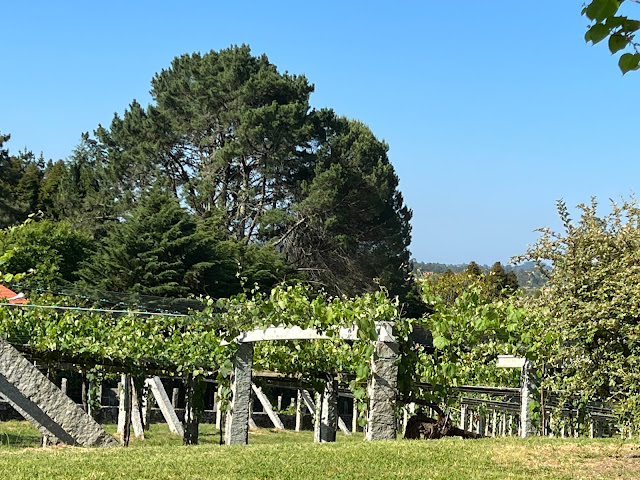


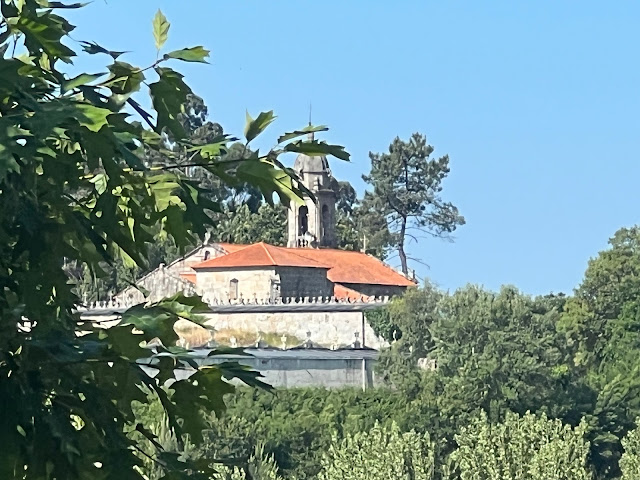


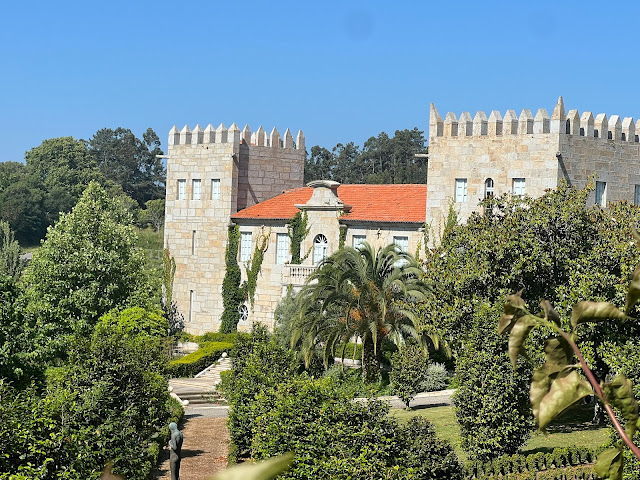
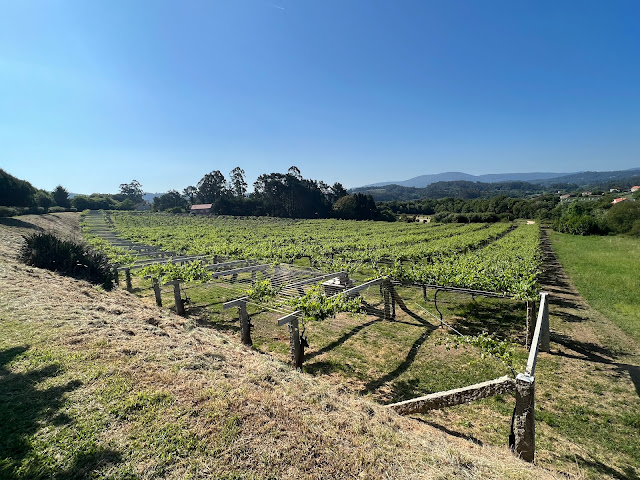


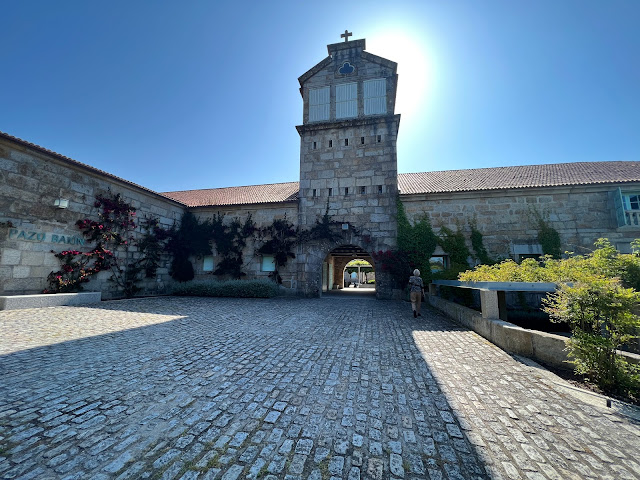






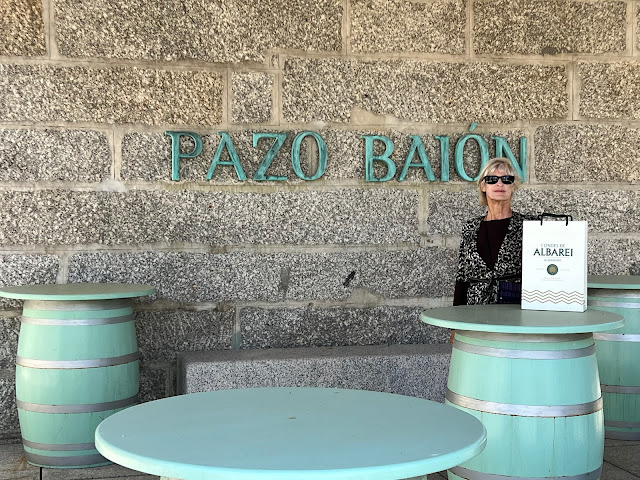

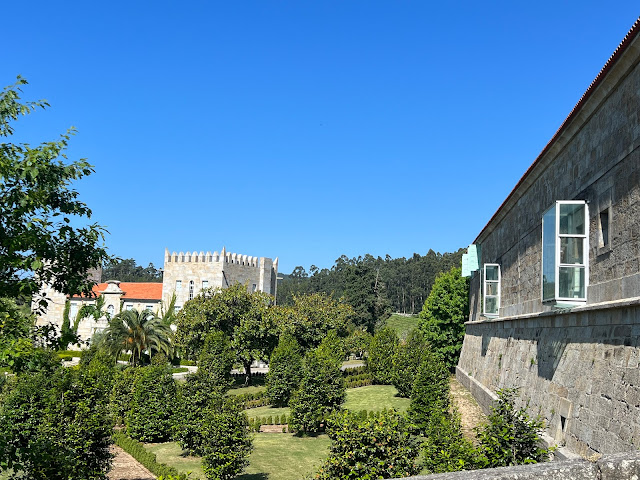








No comments:
Post a Comment